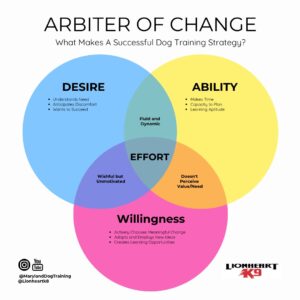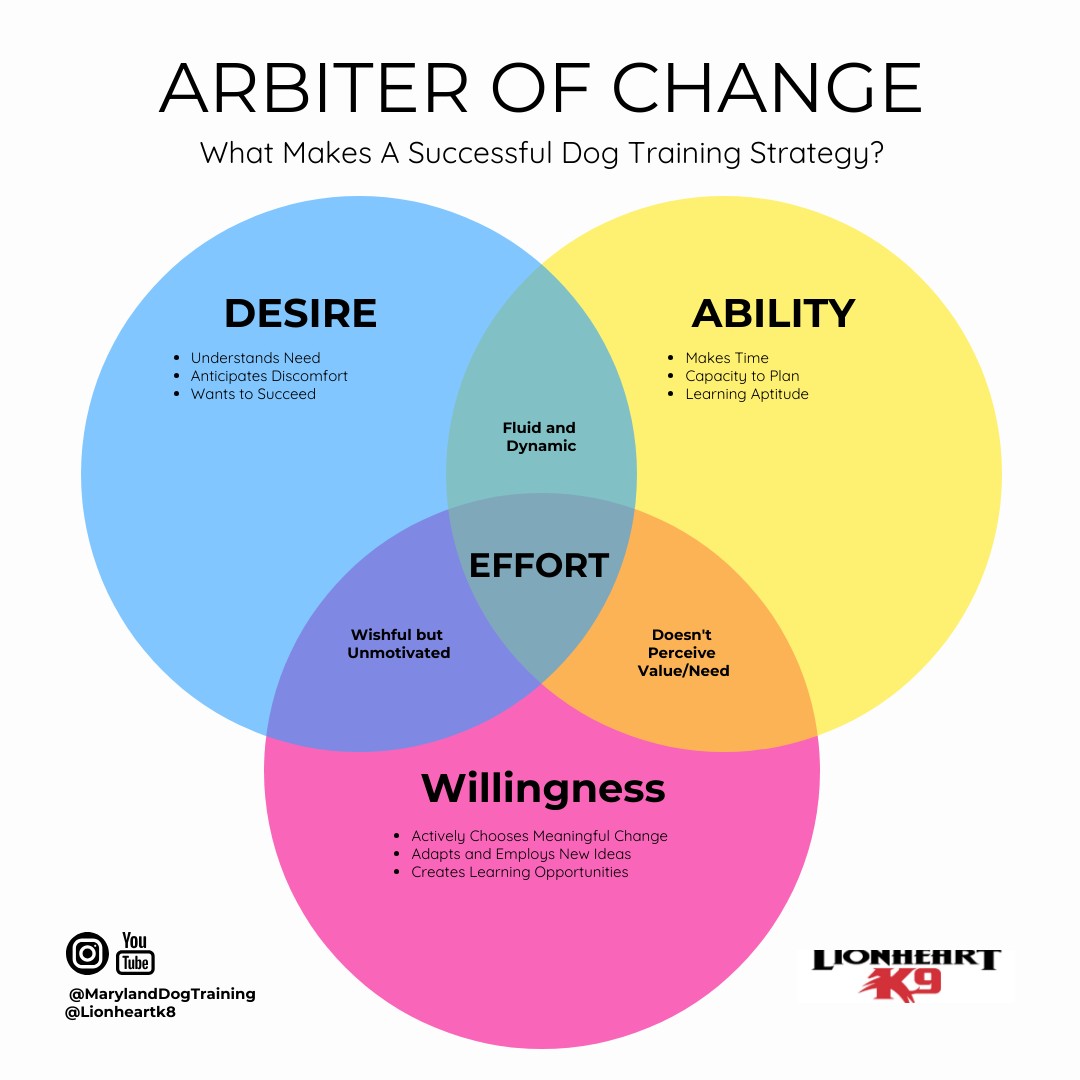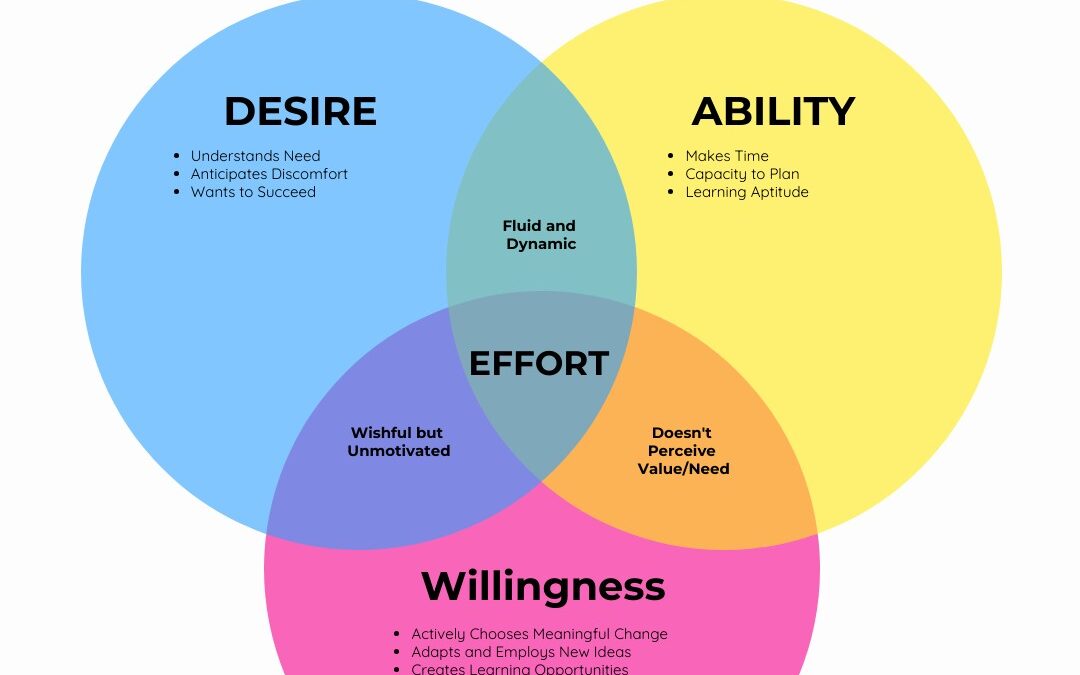 Every successful dog training strategy starts with aligning desire with ability and the willingness to make honest effort. Nothing succeeds where any one of these points fails.
Every successful dog training strategy starts with aligning desire with ability and the willingness to make honest effort. Nothing succeeds where any one of these points fails.
If an owner is not prepared to make sacrifices to assure success, they can certainly pay someone else to do it for them, but they are still stuck with needing to ‘know how’ to manage the dog appropriately once the dog is returned, ostensibly ‘trained’ by whomever agent the owner hired to do the job.
I have no issues with boarding and training programs. We have completed thousands of such programs over the years.
Boarding with training can produce exceptional outcomes, especially for owners that are hobbled by time constraints or are looking for specialized training. Overall, I prefer the owner take a hand in the work, because not only does it yield a superior result, but the team that emerges from the other side of training have a far different attitude towards each other; an appreciation of the understanding that only deliberate observation can create.
Training does that.
There is a lot of nuance to dog training, whether you choose to do it yourself, or whether you hire someone to do it for you. It requires a working understanding of physics, enough acumen to not trip over your own feet and the ability to be honest with yourself about your limitations, genuine emotional neutrality and the ability to coordinate spatial awareness in three dimensions; yours, the dog’s, and the environment itself.
For the layman, the understanding of behavior comes with critical observation throughout the training process. For the professional, the ability to exploit behavior for a specific result is the hallmark of training strategy excellence.
Teaching a dog rote behaviors isn’t training. Any dog will sit in your kitchen when there is an expectation of food. That doesn’t mean the dog knows “sit.” Teaching a dog how to adapt to triggers through the application of obedience isn’t either, really. Anyone can make a dog sit under the right amount of pressure…
Teaching a dog to choose these things is where the magic happens.That is the gift. A dog that volunteers to sit and pay attention to the owner under duress is the goal, and the challenge.
That requires skill. It requires knowledge. It requires practice.
It also requires that one denude themselves of any fantasy they may harbor about relationships, Disney, the Peaceable Kingdom, and every piece of nonsense they have acquired throughout a life of objectifying dogs as status symbols, relationship substitutes or accessories, and appreciating them for the Apex Predator they are.
Creating a successful training strategy really doesn’t require much more than a cohesive plan, time, and the wherewithal to finish what one starts. It does demand diligence. It does demand thoughtful execution, and that one non-renewable resource of time.
All dogs are dogs first. They have a fundamental assortment of behaviors that are intrinsically ‘dog’. They don’t act like cats or horses, and really, they don’t act like people. We think they do. They may share attributes with all of those things, but they are still dogs, and dogs do dog things. The like to roll in shit. They eat rotten, dead things. They howl pointlessly in the early mornings just because. They engage in many irritating acts as dogs, that are incompatible with life near humans.
The breed of dog matters simply because that predictability factor helps determine where and how you are going to apply your efforts to change the dog’s behavior. Mix the breeds and muddy the waters even more. And yes, Virginia, it’s a thing. Genetics play a huge factor in behavioral outcomes.
Some folks want to change their dogs’ nature. They selectively breed away from certain traits, while channeling others into a COI that potentially could look like the dog is literally it’s own parent. This is never a good thing. That individual is still a dog, but has been artificially rendered into something potentially more difficult in one aspect (health, temperament and longevity being primary) and easier in another (low-activity, low drive, low energy).
Randomly breeding two types of dogs together is no assurance of correcting unstable behavior. Nature abhors a vacuum. Garbage in, garbage out.
Everything is a trade-off. Knowing the potential for the appearance of certain behavior tendencies should arm the consumer with ways in which to mitigate them. What is doesn’t do is diminish the likelihood that the dog will never need training, of some form, at some point, throughout its life.
The rare ‘good dog’ doesn’t exist. Somewhere along that dog’s personal trajectory, it learned from some thing or some one how to conduct itself in accordance with its circumstance, whether it was an upland dog on wild birds, a hound chasing a hog that chose to fight, a livestock guardian learning not to harass it’s intended charges, or a Maltese learning not to foul its owners home.
Someone had the willingness, the desire, and the ability to create a training strategy sufficient to complete that singular goal, or a circumstance existed where the dog was taught by virtue of participation – no human required.
People call me all the time wanting a change in their dog’s behavior. Well, this is what it looks like. We can help you facilitate that change. It’s really this easy; I will be happy to do it for you, but you are not exonerated from at least some of the work. I can help you do it, and you’ll be doing all the work. I can provide you with a step-by-step plan on how to do the work, but you still have to do it.
I have yet to meet a dog trained by osmosis.
When you are ready, we are here. You can reach us at 717-880-4751, or send us an email.


